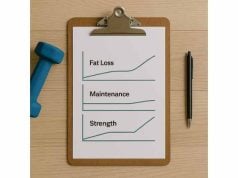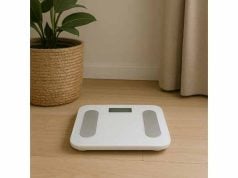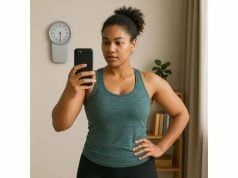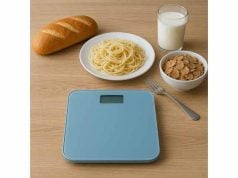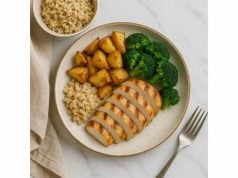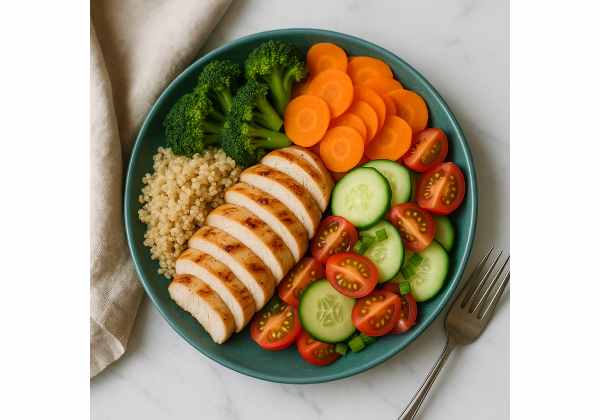
When weight loss slows, most people cut calories harder. Often, the smarter move is to change food volume and structure so you feel full on fewer calories and stay consistent. High-volume eating uses protein, fiber, water content, and low energy-dense foods to stretch satisfaction without blowing your deficit. This guide shows exactly how to build plates that keep hunger quiet, how much protein and fiber to aim for, and how to troubleshoot bloat or weekend drift. If you want a quick decision tree for stalls while you read, keep our concise plateau troubleshooting guide open in another tab.
Table of Contents
- High-volume eating during plateaus
- Protein tactics that work
- Fiber tactics without bloat
- High-volume meals and swaps
- Troubleshooting hunger and plateaus
- Safety, digestion and special cases
- What the data says
- Frequently Asked Questions
High-volume eating during plateaus
High-volume eating is a plate-building method that prioritizes food volume per calorie. You center each meal on lean protein and high-water, high-fiber plants, then add modest portions of starch and fat for energy and flavor. The result is a plate that fills your stomach and slows digestion without overshooting calories.
Why this works during plateaus
- Stretch and fullness: Foods with more water and fiber occupy more stomach space, activating stretch receptors that signal fullness.
- Protein’s satiety effect: Protein blunts hunger hormones and stabilizes appetite between meals; it also protects lean mass while you diet.
- Lower energy density: When most bites contain water and fiber, calories accumulate slowly—even when the plate looks generous.
- Adherence: Bigger plates reduce the “I’m still hungry” friction that causes late-night snacking or weekend overages.
What a high-volume plate looks like
- Half plate: vegetables or fruit (cooked greens, chunky salads, roasted veg, berries, melon, citrus).
- Quarter plate: lean protein (poultry, fish, lean beef, tofu, tempeh, egg whites, low-fat dairy).
- Quarter plate: starch (potatoes, rice, oats, whole-grain pasta, legumes if tolerated).
- Thumb or two: flavorful fats (olive oil, avocado, nuts, pesto, tahini) measured, not guessed.
Portion anchors that keep you on track
- Protein: 25–40 g per meal, 0.7–1.0 g/lb of goal body weight per day.
- Fiber: 25–40 g/day for most adults; spread evenly to avoid GI distress.
- Vegetable/fruit target: 6–10 fist-size servings per day, heavier earlier if evenings are busy.
- Liquid calories: keep minimal during deficits (choose water, calorie-free drinks).
If you need a quick refresher on energy balance and safe fat-loss basics before you tweak food volume, skim our concise weight loss basics.
Key takeaway: High-volume eating makes a deficit feel smaller. When hunger drops, adherence rises—and plateaus break because you can finally repeat good days.
Protein tactics that work
You cannot out-fiber poor protein. Start with protein, then layer volume around it. The right amount, timing, and texture of protein reduces hunger and anchors each meal.
How much and when
- Daily total: 0.7–1.0 g per lb of goal body weight (e.g., goal 160 lb → 110–160 g/day).
- Per meal: 25–40 g, 3–4 times per day.
- Training days: cluster 40–60% of your carbs around workouts, but keep protein evenly spread to maximize fullness.
Best lean sources for high-volume plates
- Poultry and fish: chicken/turkey breast, white fish, salmon portions trimmed, shrimp.
- Dairy: 0–2% Greek yogurt, skyr, cottage cheese, light string cheese.
- Eggs: whole eggs + pasteurized egg whites for bigger scrambles.
- Plant proteins: tofu, tempeh, edamame, seitan; pair legumes with grains for complete profiles.
- Convenience: 96% lean ground meats, tuna pouches, rotisserie chicken (skin removed), protein powders for smoothies or oatmeal.
Texture and cooking methods that increase satiety
- Grilled or roasted proteins keep structure and chew, slowing bites.
- Chunky stews/chilis distribute protein across many spoonfuls.
- Shredded meats mixed with chunky veg push volume higher without much fat.
- Brothy soups before meals reduce entrée calories without hunger later.
Portioning and prep strategies
- Cook protein in bulk twice a week; pre-portion 25–40 g servings.
- Use egg whites to expand omelets and scrambles without extra fat.
- “Protein first” rule at restaurants: finish the protein and veg before touching sides you do not really want.
If you want macro targets that keep you satisfied at maintenance between diet phases, see our concise guide to maintenance macros and adapt the ranges to your training load.
Key takeaway: Hit protein targets first. You will be less hungry, keep muscle, and get more mileage from the fiber tactics that come next.
Fiber tactics without bloat
Fiber is your best volume multiplier, but dosage and type matter. The goal is steady fullness with comfortable digestion—not a sudden 20-gram jump that leaves you bloated.
Know your fibers
- Soluble fiber (oats, barley, apples, citrus, beans): forms a gel, slows gastric emptying, steadies appetite.
- Insoluble fiber (wheat bran, many veggies, skins): adds bulk and speeds transit.
- Viscous champions: oats, barley, psyllium, legumes—excellent for satiety when tolerated.
Daily target and pacing
- Aim for 25–40 g/day, increasing by 5 g every 3–5 days if you are coming from low fiber.
- Split fiber across 3–4 eating occasions. Giant single-meal loads cause discomfort.
Hydration and sodium matter
- Fiber without water can backfire. Sip throughout the day.
- Keep sodium consistent; big sodium swings change water retention and scale readings, which can mask fat loss for a few days. For context on these shifts, review our short explainer on water and glycogen explained.
Smart fiber adds that do not wreck taste
- Add 1–2 tbsp chia to yogurt or oats; stir and let gel.
- Stir psyllium into smoothies (start with 1 tsp).
- Use beans/lentils in ½-cup portions at first; rinse canned beans to reduce FODMAPs.
- Build big salads with crisp lettuce, cucumber, tomatoes, peppers; add cooked grains for staying power.
Signals to adjust
- Green flags: regularity, mild fullness, steady energy.
- Yellow flags: persistent bloat, gas, or cramping → reduce insoluble fiber, swap to cooked veg, space legumes, or lower total by 5–10 g.
- Red flags: sharp pain or ongoing GI distress → consult your clinician before pushing fiber higher.
Key takeaway: Fiber works when increased gradually, paired with water, and spread across meals. Combine soluble + insoluble sources for comfort and control.
High-volume meals and swaps
Turn principles into plates. Below are templates and calorie-saving swaps that protect fullness while trimming energy density.
Breakfast templates
- Loaded yogurt bowl: 0–2% Greek yogurt (30–40 g protein) + berries + sliced kiwi + high-fiber cereal (20–30 g) + chia (1 tbsp).
- Egg white veggie skillet: egg whites + one whole egg, mushrooms, spinach, tomatoes; side of fruit; optional thin slice whole-grain toast.
- Protein oatmeal: oats cooked with extra water, stirred with whey or skyr, topped with apple slices and cinnamon.
Lunch templates
- Big salad + protein: romaine + cucumber + grape tomatoes + peppers + grilled chicken or tofu + boiled potato cubes; vinaigrette measured.
- Salsa bean bowl: black beans (½ cup), rice (⅓–½ cup), charred corn, pico, lettuce, grilled fish; yogurt-lime sauce instead of sour cream.
- Soup-and-sandwich combo: broth-based vegetable soup + open-face turkey sandwich piled high with veg.
Dinner templates
- Stir-fry: 2–3 cups mixed veg + 4–6 oz shrimp/chicken/tofu + ¾ cup cooked rice; finish with measured sauce (1–2 tbsp).
- Sheet-pan tray: white fish or chicken thighs (trimmed) with zucchini, peppers, onions; roasted potatoes measured.
- Chili or lentil stew: lean ground meat or lentils; top with diced onion, cilantro, and a dollop of skyr.
Calorie-dense to high-volume swaps
- Granola → high-fiber cereal with fruit.
- Nuts by the handful → measured nuts + extra fruit/veg.
- Creamy dressings → vinaigrette measured; add volume with crunchy veg.
- Pasta as base → veg-heavy pasta: 1–1.5 cups cooked pasta tossed with 3+ cups vegetables and lean protein.
- Fried sides → roasted or air-fried potatoes; swap fries for a baked potato with yogurt and chives.
If you adjust portions and still need more movement in the numbers, walk through our practical guide on how to adjust calories and macros without wrecking satiety.
Key takeaway: Keep protein steady, stretch meals with plants and water-rich foods, and measure fats and starches. Your plate looks big, your calories do not.
Troubleshooting hunger and plateaus
Hunger signals and scale noise can mislead you into changes you do not need. Use these if/then rules to stay objective.
If evenings are ravenous
→ Front-load volume earlier: bigger lunch salad + fruit; keep a protein-and-produce snack at 4–5 pm (yogurt + berries, turkey wrap in lettuce). Add a pre-dinner broth or side salad. Ensure 25–40 g protein at dinner.
If weekends erase the deficit
→ Plan one indulgent meal and keep the rest high-volume. Choose drinks or dessert, not both. Walk 10–20 minutes after larger meals. Keep breakfast and lunch routine so dinner can flex.
If the scale is flat for 2–3 weeks
→ Verify steps and food accuracy; then choose one change for 10–14 days:
- Trim 100–150 calories/day (usually from added fats or starch portions), or
- Add 1,500–2,000 steps/day average.
If fiber causes bloat
→ Lower insoluble sources (raw brassicas, bran); swap in cooked veg, oats, citrus, and psyllium in smaller doses. Space legumes; rinse canned beans; sip water through the day.
If training feels worse
→ You may be too aggressive with deficit or sodium is inconsistent. Place 40–60% of daily carbs around workouts; salt to taste; keep a regular bedtime.
For a full pre-adjustment review, run through our concise plateau checklist before you cut more food.
Key takeaway: Troubleshoot with one change at a time and hold it for 10–14 days. Most stalls resolve with steadier steps, sodium, sleep, and measured portions—not drastic cuts.
Safety, digestion and special cases
High-volume eating is powerful, but not everyone should push fiber and volume the same way.
Digestive conditions
- IBS/FODMAP sensitivity: large servings of beans, onions, garlic, apples, or wheat bran may trigger symptoms. Prefer low-FODMAP vegetables (zucchini, carrots, spinach), ripe bananas, rice, oats, citrus, and lactose-free dairy. Increase fiber slowly.
- GERD: avoid giant, late meals and very high-fat sauces; keep citrus and spicy foods moderate.
- Post-surgery or IBD flares: follow clinician guidance; often start with cooked, peeled vegetables and lower insoluble fiber.
Athletes and heavy training blocks
- Very high fiber can interfere with total calorie needs and pre-event gut comfort. Shift volume away from pre-training windows; use lower-fiber carbs (rice, potatoes, ripe fruit) around workouts, keeping vegetables and roughage later.
Older adults
- Appetite may be low; prioritize protein at each meal, then add fiber slowly with cooked veg and fruit to keep digestion comfortable. Hydration is critical.
Medications and fluid balance
- Some antidepressants, antipsychotics, mood stabilizers, and steroids affect appetite and water handling. Track weight trends, waist, sleep, and appetite; discuss patterns with your clinician. For a quick primer to frame the conversation, see our overview of medication-related stalls.
Disordered eating history
- Rigid rules around volume or “good/bad” foods can be counterproductive. Work with a qualified clinician or dietitian. The aim is flexibility and sufficiency, not perfection.
Key takeaway: Personalize volume and fiber to your context—digestion, training, age, and medications. Start conservative, then build toward the targets that feel good and keep you consistent.
What the data says
You do not need a lab to apply the main principles behind high-volume eating. These evidence-aligned points explain why the tactics above work—and what results to expect.
Protein’s role in satiety and weight control
- Higher protein intakes help people eat fewer calories spontaneously, preserve lean mass during deficits, and improve diet satisfaction. Practical range: 0.7–1.0 g/lb of goal body weight, split across meals.
Energy density determines how fast calories add up
- Foods high in water and fiber (vegetables, fruit, broth-based soups, potatoes, oats) deliver large portions for fewer calories. When most bites come from low energy-dense foods, you reduce total intake without feeling restricted.
Fiber supports fullness—dose and timing matter
- 25–40 g/day, spread across meals, improves fullness and consistency for most adults. Gradual increases prevent GI discomfort and improve adherence.
Volume front-loading curbs evening overeating
- Adding a salad or broth before main courses and structuring protein-and-produce snacks in the afternoon reduces evening intake without rebound hunger.
Small weekly deficits survive real life better
- When hunger and fatigue are controlled, people are more likely to hit step floors, sleep targets, and training sessions, which protect lean mass and keep the deficit intact across the entire week.
How to judge progress with volume-based dieting
- Track 7-day weight averages, weekly waist at the navel, and adherence markers (protein hits, vegetable/fruit servings, steps, sleep). If weight and waist are flat for 3–4 weeks, adjust 100–150 calories or add 1,500–2,000 steps/day and reassess.
Expected outcomes in 4–8 weeks
- Hunger ratings trend down; late-night snacking declines.
- Training quality holds or improves as carbs are placed near workouts.
- Waist reduces even when scale bounces from water and sodium shifts.
Key takeaway: The biggest wins come from protein first, fiber next, and low energy-dense plates you can repeat. That combination lowers weekly calories without white-knuckle dieting.
Frequently Asked Questions
How much protein should I eat when using high-volume meals?
Aim for 0.7–1.0 g per lb of goal body weight daily, split into 25–40 g per meal. Even distribution improves fullness and protects lean mass while you diet. Keep carbs near training for performance, but keep protein steady across the day.
How many grams of fiber are ideal without bloating?
Most adults do well at 25–40 g/day, added slowly in 5 g steps every few days. Spread fiber across meals, sip water through the day, and favor cooked vegetables and oats if your gut is sensitive. Reduce insoluble fiber if bloat persists.
Can high-volume eating break a plateau by itself?
Often, yes. Bigger, lower-calorie plates reduce hunger and late-night snacking, which restores the weekly deficit. If your 7-day weight average and waist stay flat for 3–4 weeks, trim 100–150 calories/day or add 1,500–2,000 steps/day and reassess.
What are the best foods for volume per calorie?
Build around vegetables, fruit, broth-based soups, potatoes, oats, legumes (if tolerated), low-fat dairy, lean proteins, and air-popped popcorn. Use measured fats and sauces for flavor. These foods deliver large portions with modest calories.
How do I handle weekends and eating out?
Keep breakfast and lunch high-volume and predictable. Plan one indulgent meal; choose drinks or dessert, not both. Order protein-forward plates, ask for sauces on the side, and add a side salad or broth to improve fullness without many calories.
What if fiber upsets my stomach?
Lower insoluble sources (raw brassicas, bran), increase soluble options (oats, citrus, psyllium), and reduce total by 5–10 g for a few days. Space legumes and rinse canned beans. Ongoing GI issues or pain deserve a clinician’s review.
References
- Enhanced protein intake on maintaining muscle mass, strength, and physical function in adults with overweight/obesity: A systematic review and meta-analysis 2024 (Systematic Review)
- Impacts of protein quantity and distribution on body composition 2024 (Review)
- Calorie reformulation: a systematic review and meta-analysis examining the effect of manipulating food energy density on daily energy intake 2022 (Systematic Review)
- Effect of viscous fiber supplementation on obesity indicators in individuals consuming calorie-restricted diets: a systematic review and meta-analysis of randomized controlled trials 2021 (Systematic Review)
- 7 Dietary, Functional, and Total Fiber – The National Academies Press 2005 (DRI/Guideline)
Disclaimer
This guide provides general education about nutrition, appetite management, and weight control. It does not replace personalized advice from a qualified healthcare professional. If you have medical conditions, take prescription medications, are pregnant or breastfeeding, or have a history of disordered eating, seek individualized guidance before changing diet or fiber intake.
Share and follow
If these protein and fiber tactics helped, consider sharing the article with a friend who is stuck at a plateau. For practical updates and new guides, you are welcome to follow us on the platforms you prefer—Facebook, X, Instagram, or LinkedIn.


